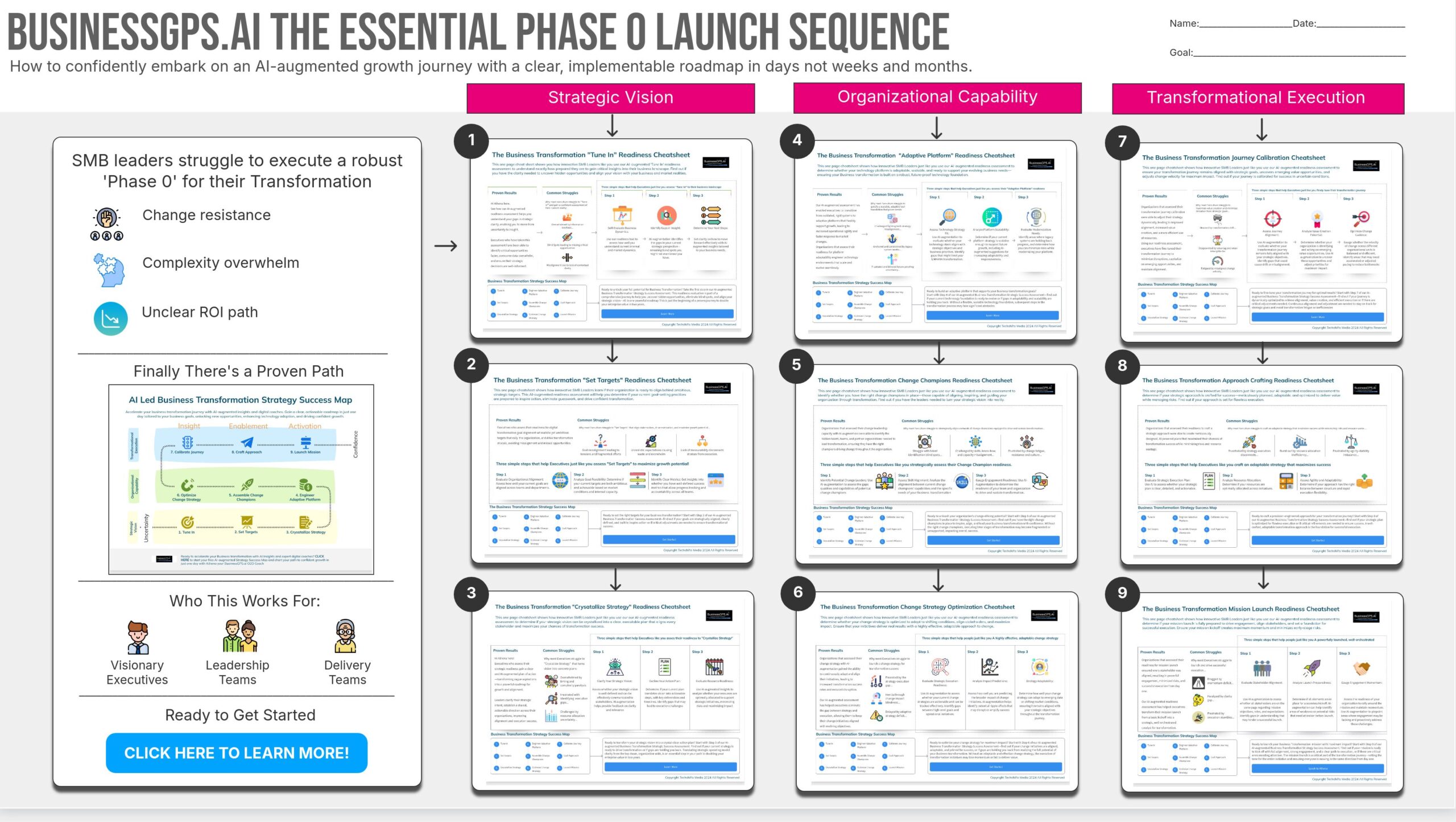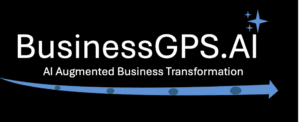
AI-First Change with Confidence
BusinessGPS.ai – The AI-Powered Success Framework for SMBs
We don’t just manage projects. We equip you to lead change. BusinessGPS.ai is built on a singular belief: the most powerful transformation happens when you own it. Unlike traditional consultants who walk out the door with the know-how, we stay focused on you, your team, and your long-term success.
Our 3 Principles for Lasting Success:
- It Starts With YOU
We don’t “take over”—we partner. You and your team become change-capable. Our model transfers knowledge, builds internal capacity, and sets you up to succeed long after we’re gone.
- A Proven Framework That Scales
From Strategy, execution, to operations, our Business Architecture (BA), Enterprise Architecture (EA), and Change Architecture (CA) framework was forged from hundreds of years of collective experience. It’s a system designed to embed a Continuous Change Capability into a business, known as the Opportunity to Operations (O2O) process. It acts as both guide and guardrail, enabling innovation without disruption and helping you scale what works.
3. AI Agents That Work With You
Cash, Capacity, and Capability are real constraints—especially for SMBs.Our AI Agents orchestrate your transformation, reducing the need for bloated project teams and empowering you to move faster, smarter, and more affordably.
Better Onboarding, Better Outcomes The seeds of failure are often planted on Day 1. Our onboarding model eliminates common project pitfalls before they happen, giving you a clear path to success from the very start.
Ready to Build a Change-Ready Business? Let’s get you moving in the right direction—with clarity, confidence, and capability.
Down load our Phase 0 Launch Sequence pdf to help guide your Transformation Success!

Or Jump into your first AI advisor and build your SuccessMap

